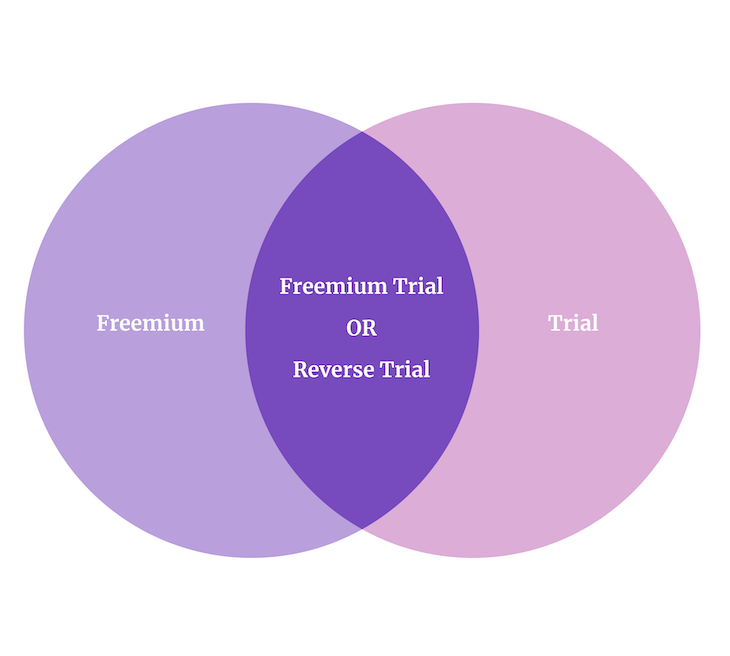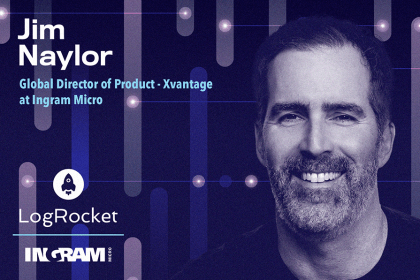Product teams commonly utilize freemium and trial-based products to acquire, hook, and convert users. However, recently a new model called a reverse trial has emerged onto the product scene.

The reverse trial concept puts a full version of the product in front of the user upfront and then takes away features unless they agree to pay more.
In this article, you will learn the basics of reverse trials, their benefits, and when they might not be the best fit for your product.
A reverse trial is a reversed version of the “freemium trial” model.
The main difference here is that new users get the premium experience upfront (without being asked to or required to put payment details), after which they are asked to either start paying or are downgraded to a freemium experience with limitations:

The goal here is to combine the benefits of freemium and trial models into one so that:
A reverse trial is a user acquisition and activation strategy that’s a mixture between freemium and trial business models:

To put the concept of reverse trials in context, let’s explore three common approaches used by product-led products to acquire and activate users:
The freemium business model gives users core value for free from day one, but limits or blocks access to premium, paid functionalities.
For example, Brainly, an EdTech product that helps students dive deeper into understanding school topics, offers its core value proposition for free with limitations. You can only see a limited number of answers each week before you get hit with a hard wall requiring you to purchase a subscription.
On the other hand, although Spotify doesn’t limit the number of songs you can listen to, it places extra friction in ads that causes heavy users to pay to remove them.
The trial model puts the whole value proposition behind the paywall while letting users experience it for free for a limited time.
The trial model is often used if serving the value proposition for free for a prolonged time is too expensive from a business perspective.
The assumption here is that the trial period will be enough for users to realize the product’s value and get hooked enough to continue paying after the trial period.
The freemium trial is a combination of the freemium and trial business model:

The underlying basis of this approach is the freemium model. However, this model also reduces the friction of upgrading to premium by offering a free trial between the freemium and premium experience.
The combination of a trial and freemium experience has many advantages over standard trial or freemium models. The most notable ones are:
By giving users access to all the benefits upfront, you dramatically increase the chance of activating them.
As a rule of thumb, the faster users experience aha moments in the product, the higher the chance they’ll stick around.
However, the freemium model effectively reduces the chance of experiencing these aha moments. They take longer to get (friction and limitations) and are more scarce (premium only aha moment behind the paywall).
By giving users a full offering without any limitations, the chance they’ll stumble upon aha moments increases significantly, thus increasing their chance of activation.
Reverse trials tend to speed up the time to revenue dramatically.
Let’s compare it to the freemium trial model. In this case, users first explore the freemium capabilities, it takes them time to develop the willingness to try out the premium model, and then they go through a free trial. This increases the time to the first billing, even for the most engaged users.
With reverse trials, users face the decision point faster. Right after signing up, they’re in the trial mode and quickly have to decide to pay or downgrade. The committed users will convert right away, leading to additional revenue.
Even if it makes only two days difference, at a scale, it’ll have a significant impact on your payback period and ability to reinvest in further acquisition.
Some users are simply averse to starting a trial. There are two common reasons for that.
First, some users try to “save the trial” for later. Although they could benefit from the extra benefits, they are not yet willing to commit to paying and instead try to save up these “free premium benefits” in case they’ll need them more later.
Secondly, some people just hate putting their payment information online. The most common case is people worrying they’ll forget about the trial and be charged unwillingly.
Reverse trials combat both cases. Giving it upfront means users don’t fall into the “save it for later” fallacy, and not requiring any payment information helps combat the fear of an accidental payment.
While reverse trials greatly benefit both the business and users, it’s not always a viable solution. Let’s explore where reverse trials might be a bad idea:
A common product-led approach to building products is to differentiate offering per problem.
You first solve so-called “beginner problems” for free. Once you help your users solve them, they are ready to solve more advanced problems, which you offer behind the paywall.
For example, Buffer solves the beginner problem of scheduling social media posts for free but requires a subscription to solve advanced problems, such as engagement analytics.
You can then build a smooth onboarding experience around that. Initially, your product focuses on beginner problems, so you tailor-make your onboarding, communication, and so on to help users solve them.
Only after users solve them, you try to help them with more advanced problems and onboard them to extra solutions that help users solve them:

Reverse trials would break this flow.
If you push users to trial at the very beginning, you effectively try to onboard them to solve both beginner and advanced problems simultaneously. It’s an easy way to overwhelm users.
To put it into perspective, imagine if you first sell a car to a customer and then offer them extra insurance. Offering them a car, insurance, and other additional services before they even decided on a type of car would scare most people off.
Reverse trials work for products requiring an investment from users.
Imagine Audible offering a reverse trial with unlimited access to audiobooks for a week. What would stop users from creating a brand new account every week to get the premium experience for free? Nothing.
And the fact that a reverse trial doesn’t require credit card details upfront would make it hard for them to distinguish multi-accounts. This would be a severe problem for Audible.
On the other hand, let’s consider health-tracking apps. The product’s value increases with usage — the longer you track your health data, the more insights and patterns you can notice. Creating a brand new account every week or so would kill the purpose of using the product in the first place.
In short, avoid reverse trials if your users can spam multi-accounts and still get value from your product.
Reverse trials work under the assumption that you can serve freemium and trial offerings at scale.
If the costs of serving any of these are high, reverse trials are probably unfeasible.
To serve a freemium model, you must have meager marginal costs, where your costs hardly increase with every new user served.
The other question is the cost of the trial.
The benefit of the freemium trial or normal trial model is that it tends to acquire highly qualified leads with high chances of conversion, which justifies the extra cost-to-serve. The additional friction to sign up for a trial and put in credit card details is actually a good thing when it comes to qualifying people most likely to buy.
On the other hand, if you serve a trial experience for everyone who signs up, you will acquire extra costs. For reverse trials to work, it must be economically feasible to serve both freemium and trial at scale.
The reverse trial is a relatively new concept that combines the benefits of freemium and trial business models. You start by giving every new user a full premium experience for a limited time and then nudge them to either downgrade or start paying.
This approach greatly increases the activation chance by exposing users to more aha moments while fighting their trial aversion. It also does a good job maximizing your time-to-revenue, allowing you to reinvest money faster.
However, it’s not a silver bullet solution.
First, it doesn’t work in cases where your free and premium offerings solve different types of problems. In such cases, you want to smoothly transition users from beginner problems to advanced problems, not overwhelm them with everything at once.
Although reverse trials have had a lot of hype and attention recently, at the end of the day they’re just one of the ways to model your acquisition and activation funnel.
The benefits might be tempting, but think twice before hopping on the wagon.
Featured image source: IconScout
LogRocket identifies friction points in the user experience so you can make informed decisions about product and design changes that must happen to hit your goals.
With LogRocket, you can understand the scope of the issues affecting your product and prioritize the changes that need to be made. LogRocket simplifies workflows by allowing Engineering, Product, UX, and Design teams to work from the same data as you, eliminating any confusion about what needs to be done.
Get your teams on the same page — try LogRocket today.

Red-teaming reveals how AI fails at scale. Learn to embed adversarial testing into your sprints before your product becomes a headline.

Cory Bishop talks about the role of human-centered design and empathy in Bubble’s no-code AI development product.

Learn how to reduce mobile friction, boost UX, and drive engagement with practical, data-driven strategies for product managers.

Jim Naylor shares he views documentation as a company’s IP and how his teams should use it as a source of truth.